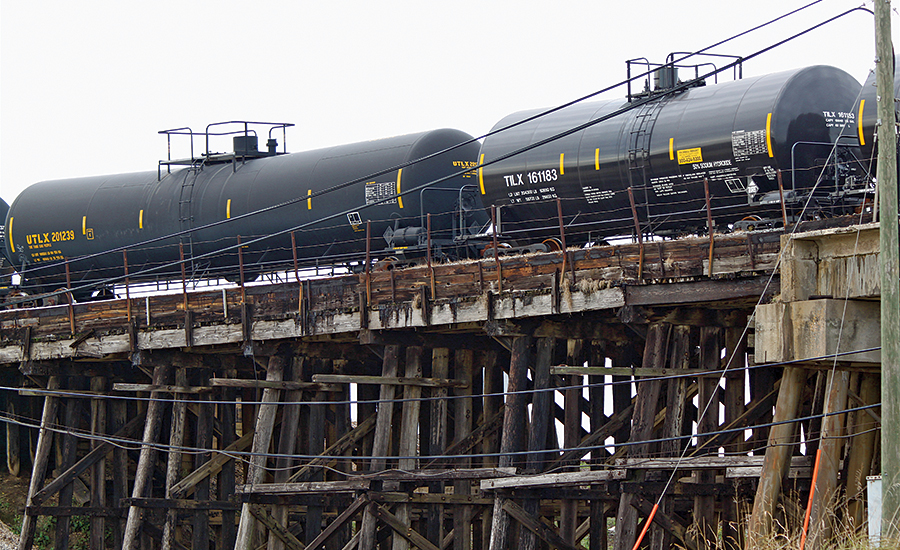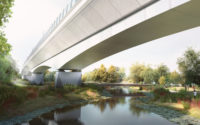Days after two Wisconsin oil and ethanol train derailments in early November, a national environmental watchdog group released a scathing critique of the decaying state of freight rail infrastructure—especially bridges—and the dangers they pose to wildlife habitats and waterways as heavier volumes of hazardous materials put pressure on aging track.
The Waterkeeper Alliance said “citizen inspectors” identified deficiencies, deterioration and rotting foundations in 46% of the bridges inspected and called on the Federal Railroad Administration and Congress to step up policing efforts of the rail industry.
On Nov. 8, a crude-oil train derailed, leaking oil in Watertown, Wis. A day earlier, on the state’s western border, another train derailed, spilling ethanol into the Mississippi River. While no injuries were reported and the cleanup efforts were relatively small, Waterkeeper’s report hoped to punctuate the incidents by reminding officials and the public that crude-oil traffic has jumped 5,000% in five years, imposing an unprecedented degree of risk.
“The nation’s 100,000 rail bridges cross nearly every major waterway, traverse highly populated areas and present a recipe for catastrophe beyond the scale of anything we have seen—even if just one oil train derails, spills and explodes,” the report said.
The Association of American Railroads (ARR) issued a swift rebuttal, pointing out that the industry spent $29 billion on bridge construction and maintenance in 2014 alone. Also, AAR notes, non-engineers are not qualified to perform bridge inspections.
“You can’t tell the condition of a bridge by looking at it, so we’re concerned that these inspections were done by non-engineers” says Ed Greenberg, spokesman for AAR. “Some of the bridges aren’t painted, they look old, etc. … but the aesthetic characteristics of the bridge have no relationship to its structural integrity.”
The National Railroad Construction and Maintenance Association said several members counted bridge work as a major chunk of their businesses in recent years. “The railroads have a full construction and maintenance agenda, but they are focused on bridges,” said Chuck Baker, president NRCMA. “They have to grind track down, inspect relays, build new locomotives—but bridges are definitely up there on the list.”
Baker is skeptical that expanding federal regulations to mandate third-party inspection of rail bridges would mean more work for engineering contractors. “Customers are pretty well incentivized to maintain their own bridges because, if something goes wrong, it’s pretty devastating,” he says. “New regulations would probably create more paperwork than anything else.”
If a bridge inspector or train crew raises a concern about a particular bridge, Greenberg says the freight railroad industry follows an aggressive 24-7 “safety first” process—that is, the structure in question is taken out of service immediately until a qualified railroad-bridge engineer examines the structure to determine its condition, he said.
Waterkeeper acknowledges its inspectors are not bridge engineers but adds that they do have legal, public-policy and scientific experience monitoring waterways for pollution and other threats. The report cited “failing, undermined and missing structural materials … common where foundations sit in waterways, especially below the high-water mark. Waterkeepers observed makeshift repairs, including concrete patches and use of metal straps and brackets to reinforce failing and missing beams.”
Waterkeeper and others say the railroads have too much power to self-document, self-inspect and self-report infrastructure data. Rick Inclima, safety director for the Brotherhood of Maintenance of Way Employees, counters, “Several of the recommendations … [in the] ‘call to action’ are currently covered under 49 [Code of Federal Regulations], Part 237, concerning the inspection, maintenance, repair, load-rating and record-keeping requirements for railroad bridges.”





